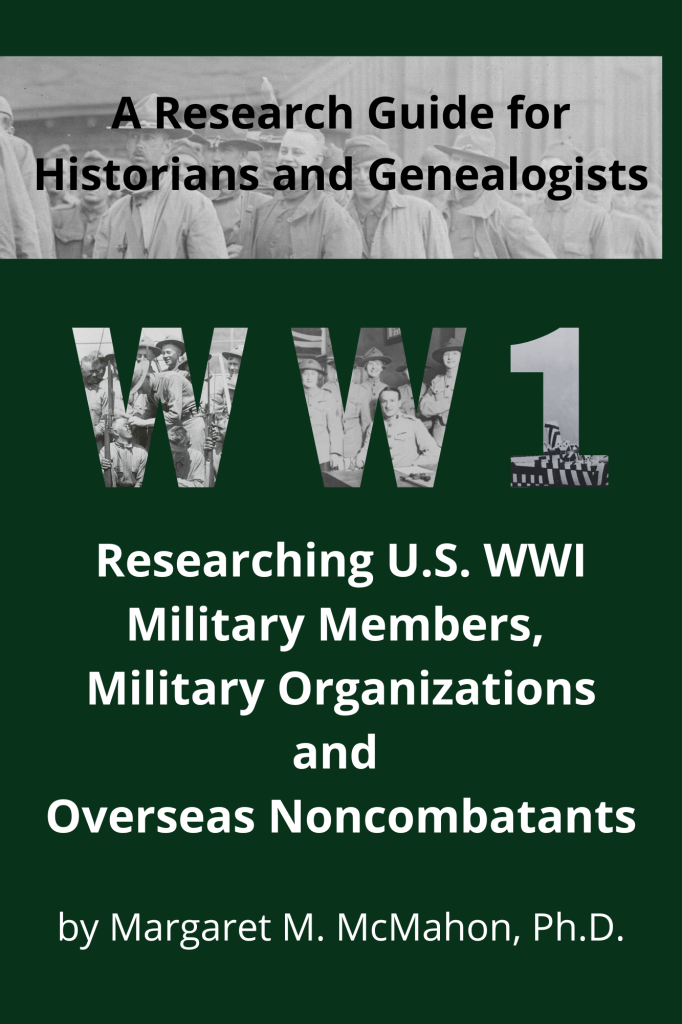Book: Researching U.S. WWI Military Members, Military Organizations and Overseas Noncombatants: A Research Guide for Historians and Genealogists
Our new book shows how you can learn about the service of a U.S. World War I military member, WWI military organizations and about noncombatants who went overseas. It will show you how to use a timeline to capture what you will learn during your WWI research. Learn to use a variety of resources including online records, social networking, archives and how to expand your search to other places where material from WWI can be found. It concludes with ideas to turn your research into a project that can be shared with others.
Click here for an information sheet about the book.
“The author’s strong interest in this subject and her extensive research experience are evident throughout the book. She provides tips from her own experience to help researchers achieve success in their online searches and visits to research facilities. This guide opens up many avenues that will help to direct genealogists and military historians in their research efforts.” – Maryland Genealogical Society Journal, Vol. 64, No. 1.
“My book arrived today. I’ve found 2 additional ancestors that served in WW I” – S.B.
“With her latest book ‘Researching US WWI Military Members. Military Organizations and Overseas Non-Combatants’ Dr. Margaret ‘Mac’ McMahon has moved from being the teacher of how to research WWI American soldiers to now opening the vaults on all services, military organizations, and even the non-military service organizations’ volunteers.
For many folks, this all-inclusive book will be their first real introduction to the techniques and tools required to do research on a relative who served in the Great War. For those of us who know a little bit about researching WWI, this easy-to-follow guide unlocks some of the lesser known databases that are available. Everybody knows that Ancestry,com and FamilySearch.com have tons of info about WWI but what does that really mean? Now, with this latest book, Mac leads the reader carefully through the process and teaches how to navigate those sites and even provides methods to use if or when you don’t find the responses you were expecting.
She has also laid out a path for using resources from the Library of Congress, the American Battle Monuments Commission, the US Department of Veterans Affairs and others. For many folks, knowing how to get started in WWI research has been the hardest step. With this guidebook all that has changed and now the beginning researcher’s journey will be much faster and ultimately more satisfying.
This is not the sort of book you are going to sit down with and read while drinking a cup of coffee; instead you need to start with a new highlighter and a pad of post-it notes, it’s that helpful. If you are interested in burrowing into the past and finding information on the soldiers, sailors, Marines, or even the Red Cross and YMCA volunteers in your family, you’ll want this book. Dr. McMahon, now that you have published this one, how about digging in and giving us a comparable book on researching our American family members in WWII?” – Virginia Historian on Amazon




